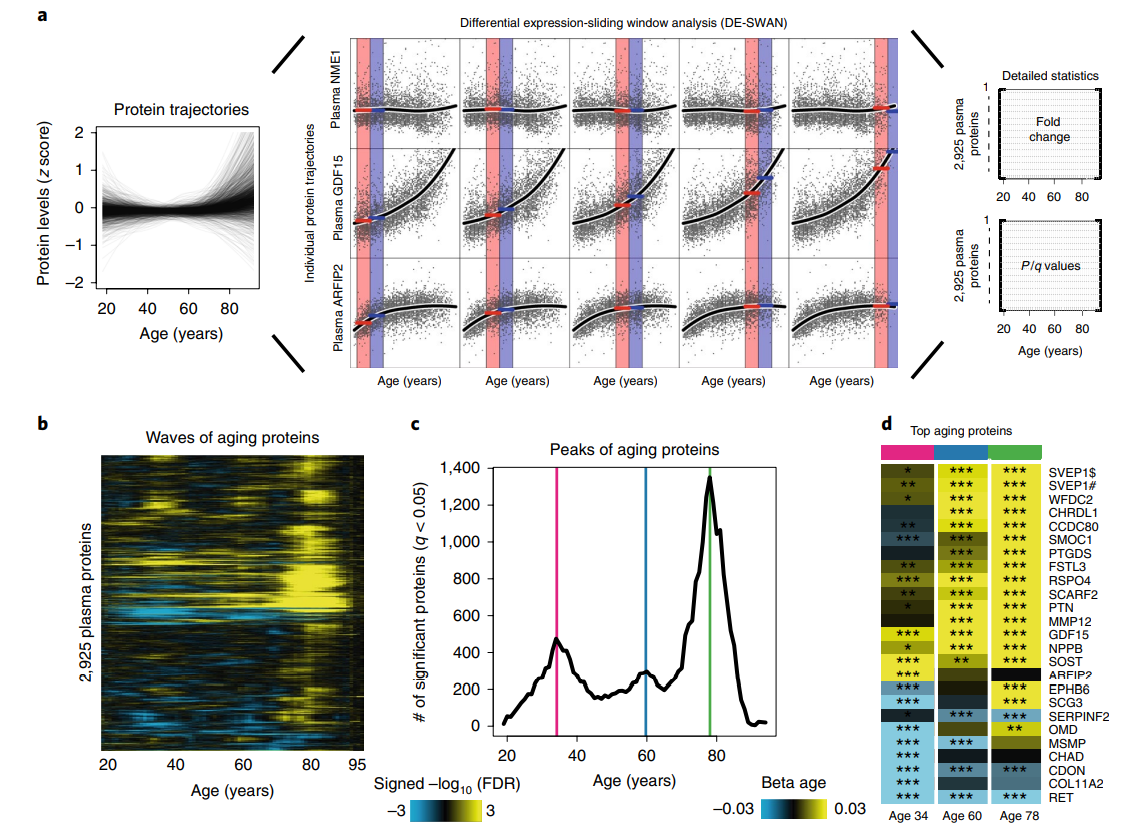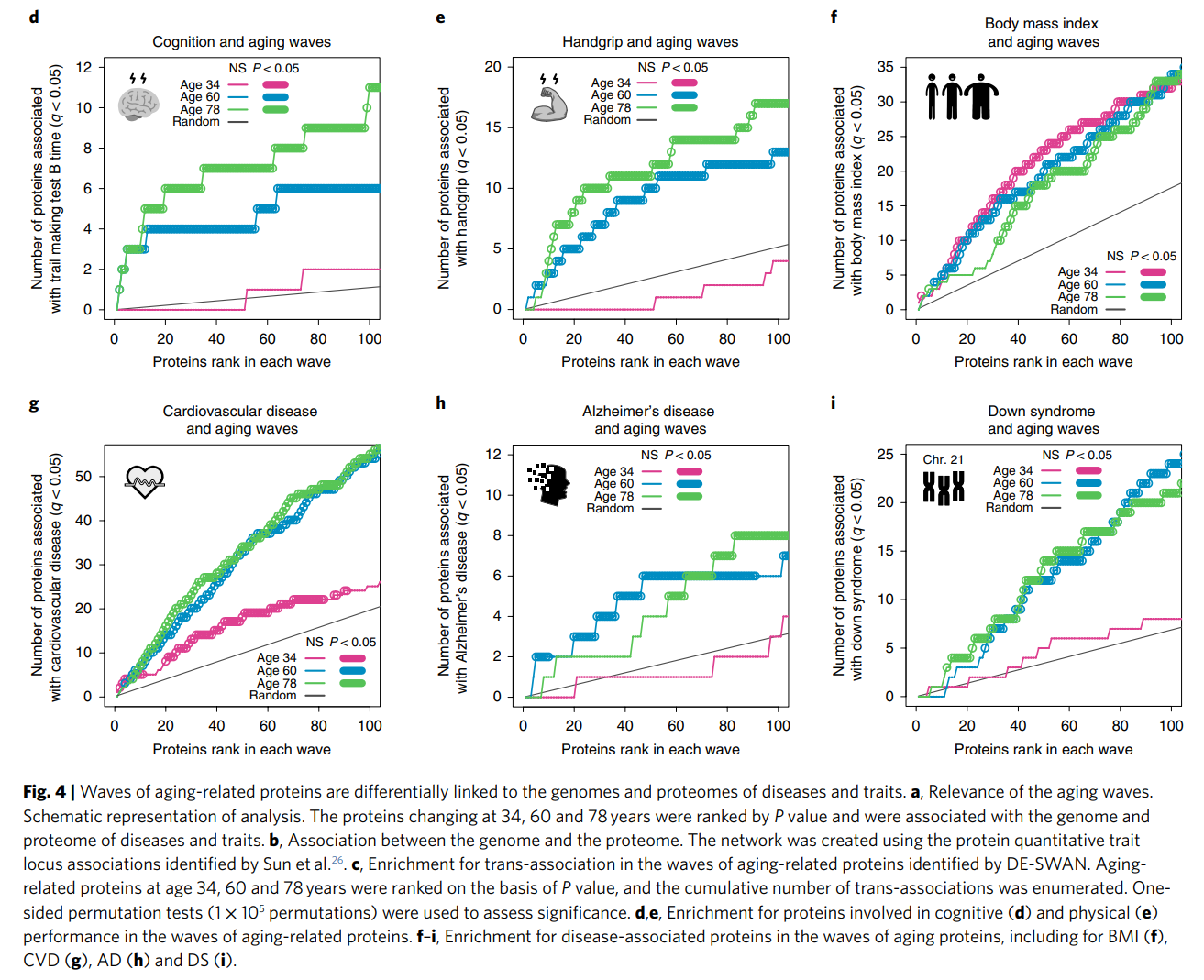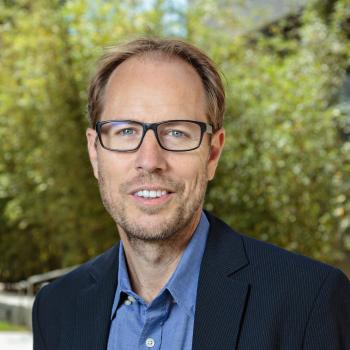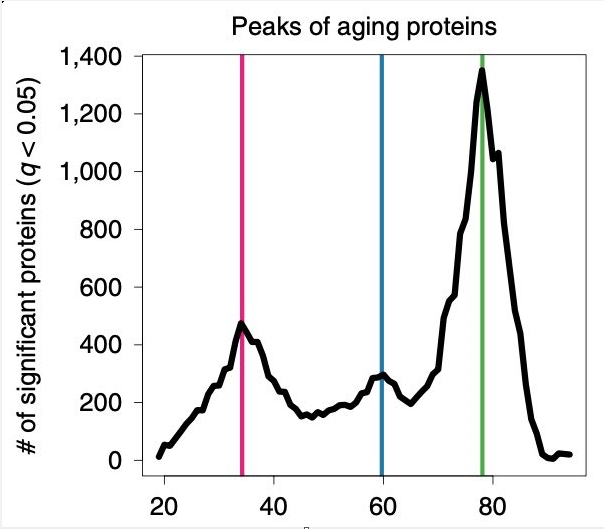衰老的进程并不是均匀的,而是有 3 个时间节点——34 岁、60 岁、78 岁。
这 3 个时间节点对大部分人来说都是如此。大家都是在这 3 个年龄节点,在可测的指标上突然大幅衰老。而在其他时间段,衰老的进程要慢得
Tony 团队把年轻小鼠的血液输送给老年小鼠后,很明显的改善了老年小鼠的大脑功能。这就提示 Tony 团队,血液中肯定存在着很多与年龄相关的物质,如果把这些物质的浓度、种类、配比准确测量出来,说不定就能用它来评估衰老程度。所以从 2015 年开始,他们就把注意力集中在血浆蛋白上。
血浆蛋白是个统称,可测的蛋白质有几千种,有的负责维持渗透压,有的负责稳定 pH 值,有的是免疫蛋白,有的起催化作用,有的起运输作用,有的起凝血作用等等。每升血液里的血浆蛋白大概有 70 多克。
Tony 团队一共召集了 4263 个年龄从 18-95 岁的人,测量了他们体内 2925 种血浆蛋白,然后在海量数据里筛选出与年龄变化高度相关的蛋白质,就得出了以上的结论。
Lehallier, B., Gate, D., Schaum, N., Nanasi, T., Lee, S. E., Yousef, H., Moran Losada, P., Berdnik, D., Keller, A., Verghese, J., Sathyan, S., Franceschi, C., Milman, S., Barzilai, N., & Wyss-Coray, T. (2019). Undulating Changes in Human Plasma Proteome Profiles Across the Lifespan. Nature Medicine, 25(12), Article 12. https://doi.org/10.1038/s41591-019-0673-2
Wang, T., Ma, J., Hogan, A. N., Fong, S., Licon, K., Tsui, B., Kreisberg, J. F., Adams, P. D., Carvunis, A.-R., Bannasch, D. L., Ostrander, E. A., & Ideker, T. (2019). Quantitative Translation of Dog-to-Human Aging by Conserved Remodeling of Epigenetic Networks (p. 829192). bioRxiv. https://doi.org/10.1101/829192



Tony Wyss-Coray is the D.H. Chen Distinguished Professor of Neurology and Neurological Sciences and the Director of the Phil and Penny Knight Initiative for Brain Resilience at Stanford University. His lab studies brain aging and neurodegeneration with a focus on age-related cognitive decline and Alzheimer’s disease. The Wyss-Coray research team discovered that circulatory blood factors can modulate brain structure and function and factors from young organisms can rejuvenate old brains. Current studies focus on the molecular basis of the systemic communication with the brain by employing a combination of genetic, cell biology, and –omics approaches in killifish, mice, and humans. Wyss-Coray has presented his ideas at Global TED, the Tencent WE Summit, and the World Economic Forum, and he was voted Time Magazine’s “The Health Care 50” most influential people transforming health care in 2018. He co-founded Alkahest Inc. and several other companies targeting Alzheimer’s and neurodegeneration and has been the recipient of an NIH Director’s Pioneer Award, a Zenith Award from the Alzheimer’s Association, and a NOMIS Foundation Award.




